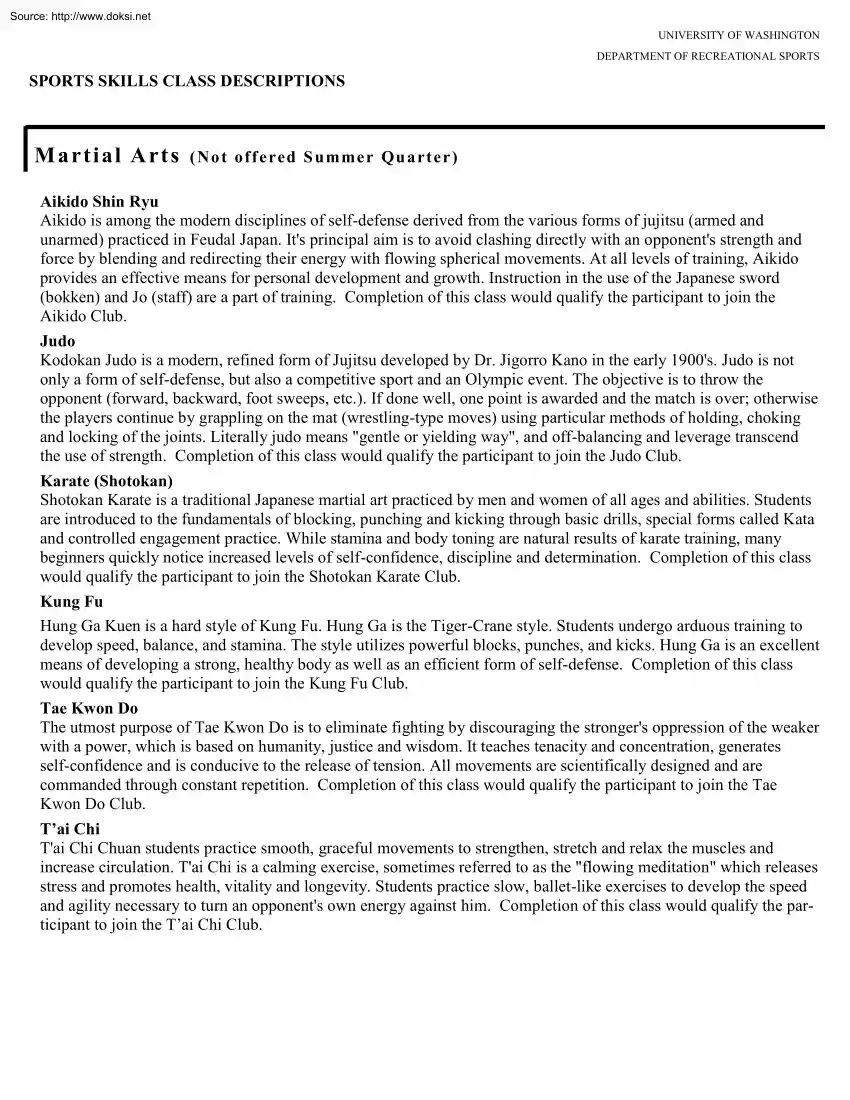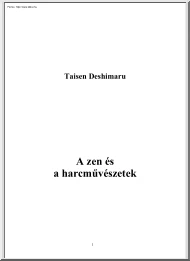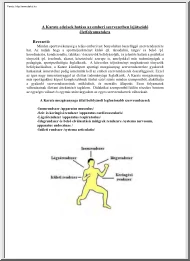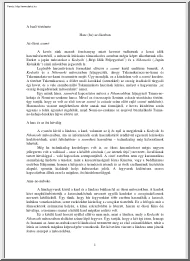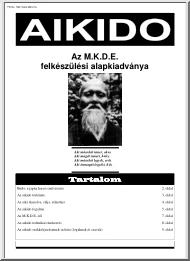Datasheet
Year, pagecount:2012, 1 page(s)
Language:English
Downloads:2
Uploaded:July 04, 2019
Size:574 KB
Institution:
-
Comments:
UNIVERSITY OF WASHINGTON
Attachment:-
Download in PDF:Please log in!
Comments
No comments yet. You can be the first!Most popular documents in this category
Content extract
Source: http://www.doksinet UNIVERSITY OF WASHINGTON DEPARTMENT OF RECREATIONAL SPORTS SPORTS SKILLS CLASS DESCRIPTIONS Martial Arts ( N o t of f e r ed S u mme r Q u a r t e r ) Aikido Shin Ryu Aikido is among the modern disciplines of self-defense derived from the various forms of jujitsu (armed and unarmed) practiced in Feudal Japan. Its principal aim is to avoid clashing directly with an opponents strength and force by blending and redirecting their energy with flowing spherical movements. At all levels of training, Aikido provides an effective means for personal development and growth. Instruction in the use of the Japanese sword (bokken) and Jo (staff) are a part of training. Completion of this class would qualify the participant to join the Aikido Club. Judo Kodokan Judo is a modern, refined form of Jujitsu developed by Dr. Jigorro Kano in the early 1900s Judo is not only a form of self-defense, but also a competitive sport and an Olympic event. The objective is to throw
the opponent (forward, backward, foot sweeps, etc.) If done well, one point is awarded and the match is over; otherwise the players continue by grappling on the mat (wrestling-type moves) using particular methods of holding, choking and locking of the joints. Literally judo means "gentle or yielding way", and off-balancing and leverage transcend the use of strength. Completion of this class would qualify the participant to join the Judo Club Karate (Shotokan) Shotokan Karate is a traditional Japanese martial art practiced by men and women of all ages and abilities. Students are introduced to the fundamentals of blocking, punching and kicking through basic drills, special forms called Kata and controlled engagement practice. While stamina and body toning are natural results of karate training, many beginners quickly notice increased levels of self-confidence, discipline and determination. Completion of this class would qualify the participant to join the Shotokan Karate Club.
Kung Fu Hung Ga Kuen is a hard style of Kung Fu. Hung Ga is the Tiger-Crane style Students undergo arduous training to develop speed, balance, and stamina. The style utilizes powerful blocks, punches, and kicks Hung Ga is an excellent means of developing a strong, healthy body as well as an efficient form of self-defense. Completion of this class would qualify the participant to join the Kung Fu Club. Tae Kwon Do The utmost purpose of Tae Kwon Do is to eliminate fighting by discouraging the strongers oppression of the weaker with a power, which is based on humanity, justice and wisdom. It teaches tenacity and concentration, generates self-confidence and is conducive to the release of tension. All movements are scientifically designed and are commanded through constant repetition. Completion of this class would qualify the participant to join the Tae Kwon Do Club. T’ai Chi Tai Chi Chuan students practice smooth, graceful movements to strengthen, stretch and relax the muscles and
increase circulation. Tai Chi is a calming exercise, sometimes referred to as the "flowing meditation" which releases stress and promotes health, vitality and longevity. Students practice slow, ballet-like exercises to develop the speed and agility necessary to turn an opponents own energy against him. Completion of this class would qualify the participant to join the T’ai Chi Club
the opponent (forward, backward, foot sweeps, etc.) If done well, one point is awarded and the match is over; otherwise the players continue by grappling on the mat (wrestling-type moves) using particular methods of holding, choking and locking of the joints. Literally judo means "gentle or yielding way", and off-balancing and leverage transcend the use of strength. Completion of this class would qualify the participant to join the Judo Club Karate (Shotokan) Shotokan Karate is a traditional Japanese martial art practiced by men and women of all ages and abilities. Students are introduced to the fundamentals of blocking, punching and kicking through basic drills, special forms called Kata and controlled engagement practice. While stamina and body toning are natural results of karate training, many beginners quickly notice increased levels of self-confidence, discipline and determination. Completion of this class would qualify the participant to join the Shotokan Karate Club.
Kung Fu Hung Ga Kuen is a hard style of Kung Fu. Hung Ga is the Tiger-Crane style Students undergo arduous training to develop speed, balance, and stamina. The style utilizes powerful blocks, punches, and kicks Hung Ga is an excellent means of developing a strong, healthy body as well as an efficient form of self-defense. Completion of this class would qualify the participant to join the Kung Fu Club. Tae Kwon Do The utmost purpose of Tae Kwon Do is to eliminate fighting by discouraging the strongers oppression of the weaker with a power, which is based on humanity, justice and wisdom. It teaches tenacity and concentration, generates self-confidence and is conducive to the release of tension. All movements are scientifically designed and are commanded through constant repetition. Completion of this class would qualify the participant to join the Tae Kwon Do Club. T’ai Chi Tai Chi Chuan students practice smooth, graceful movements to strengthen, stretch and relax the muscles and
increase circulation. Tai Chi is a calming exercise, sometimes referred to as the "flowing meditation" which releases stress and promotes health, vitality and longevity. Students practice slow, ballet-like exercises to develop the speed and agility necessary to turn an opponents own energy against him. Completion of this class would qualify the participant to join the T’ai Chi Club
